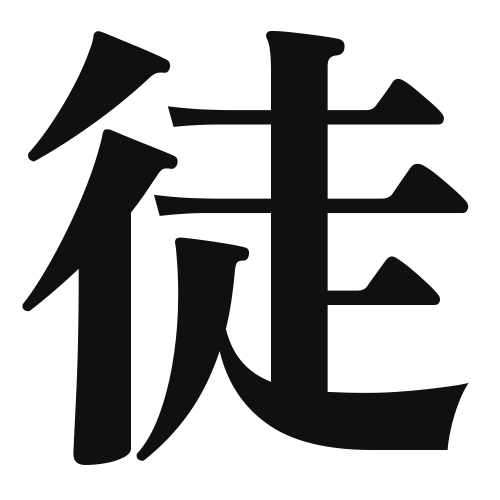1. Overview of Meaning
The kanji “徒” (pronounced “to” or “azu”) generally means “follower,” “group,” or “person.” It often conveys the idea of someone who is part of a group or a disciple of a certain philosophy or leader.
2. Formation and Radical
Formation of the Kanji: The kanji “徒” is a compound character (会意文字) that combines elements to convey its meaning. It consists of the radical for “foot” (足) and the character “to” (土), symbolizing movement or following.
Radical: The radical of “徒” is 足 (foot), which relates to movement and action.
3. Examples of Usage
Common Words and Phrases: Some frequently used words that include “徒” are:
- 徒弟 (とてい, “disciple”)
- 徒然 (つれづれ, “unoccupied time”)
Example Sentences in Daily Conversation:
- 彼は私の徒弟です。 (かれはわたしのとていです。) – “He is my disciple.”
- 徒然なるままに書きます。 (つれづれなるままにかきます。) – “I will write as I feel unoccupied.”
4. Synonyms and Antonyms
Similar Kanji: A similar kanji is “従” (じゅう, “to follow”), which emphasizes obedience or compliance, while “徒” focuses more on the aspect of being part of a group.
Antonyms: An antonym for “徒” could be “独” (どく, “alone” or “independent”), which signifies solitude or independence from a group.
5. Cultural and Historical Background
Relation to Japanese Culture: The concept of “徒” is significant in Japanese culture, especially in the context of martial arts and traditional crafts, where a master-disciple relationship is highly valued.
Proverbs and Idioms: One common saying is “徒労に終わる” (とろうにおわる), which means “to end in vain,” highlighting the idea of effort without reward, often used in discussions about perseverance and dedication.
